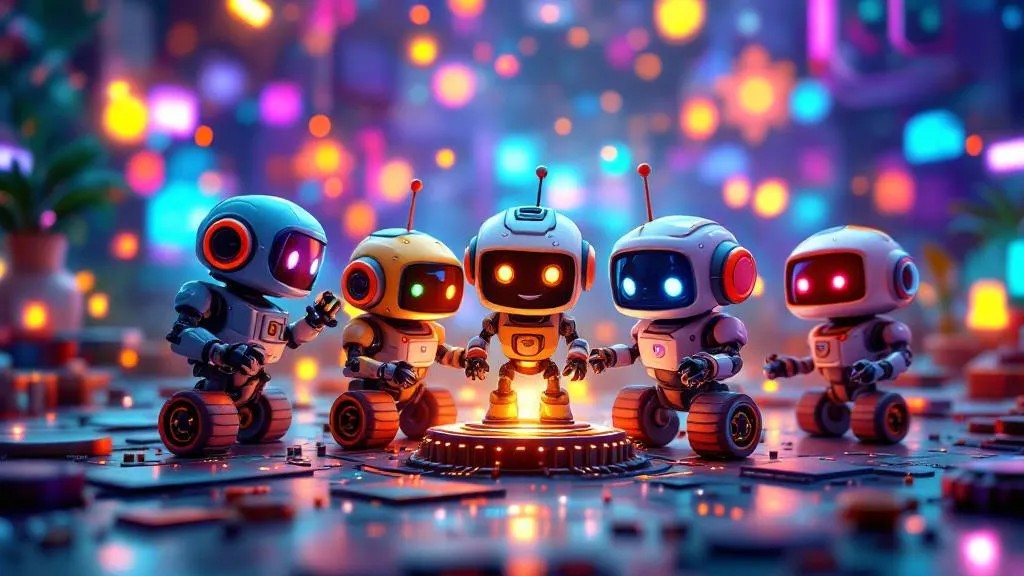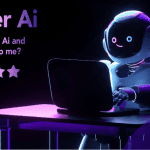
The artificial intelligence landscape has exploded with terminology that often gets used interchangeably, creating confusion for businesses and consumers alike. You’ve probably encountered terms like AI, bots, AI agents, and chatbots thrown around in marketing materials, tech articles, and boardroom discussions—but do you know what each one actually means?
Understanding these distinctions isn’t just academic exercise. Whether you’re evaluating software solutions for your business, considering career paths in technology, or simply trying to make sense of our increasingly automated world, knowing the differences between these technologies can help you make better decisions and communicate more effectively.
This guide breaks down each term with clear definitions, practical examples, and real-world applications. By the end, you’ll have a solid grasp of when to use each term correctly and how these technologies actually differ in function and capability.
What is AI (Artificial Intelligence)?
Artificial Intelligence serves as the umbrella term encompassing all technologies that enable machines to simulate human intelligence. AI systems can learn from data, recognize patterns, make decisions, and solve problems that traditionally required human cognitive abilities.
Modern AI operates through several key approaches:
Machine Learning forms the foundation of most current AI applications. These systems improve their performance by analyzing large datasets and identifying patterns without explicit programming for every scenario.
Deep Learning represents a more sophisticated subset, using neural networks with multiple layers to process information similarly to how the human brain works. This technology powers applications like image recognition and natural language processing.
Natural Language Processing (NLP) enables machines to understand, interpret, and generate human language in meaningful ways.
AI applications span virtually every industry. In healthcare, AI analyzes medical images to detect diseases earlier than human radiologists. Financial institutions use AI for fraud detection and algorithmic trading. Streaming services like Netflix employ AI to recommend content based on viewing history and preferences.
The key characteristic of AI is its ability to adapt and improve over time. Unlike traditional software that follows predetermined rules, AI systems evolve their responses based on new information and experiences.
Understanding Bots
Bots are automated software programs designed to perform specific tasks without human intervention. The term “bot” comes from “robot” and encompasses a broad category of applications that execute repetitive or rule-based functions.
Bots operate on predetermined instructions and follow logical pathways to complete their assigned tasks. They don’t necessarily require AI technology to function effectively—many bots rely on simple if-then programming logic.
Common types of bots include:
Web crawlers systematically browse the internet to index content for search engines like Google. These bots follow links from page to page, cataloging information according to specific parameters.
Social media bots automatically post content, like posts, or follow accounts based on programmed criteria. While some serve legitimate marketing purposes, others spread misinformation or artificially inflate engagement metrics.
Trading bots execute buy and sell orders in financial markets based on predetermined criteria like price movements or market indicators.
Gaming bots perform repetitive actions in video games, such as collecting resources or completing quests, often against the game’s terms of service.
The defining feature of traditional bots is their predictable behavior. They excel at handling routine tasks quickly and consistently, but struggle with situations that fall outside their programmed parameters.
What are AI Agents?
AI agents represent a more sophisticated evolution of automated systems, combining artificial intelligence with autonomous decision-making capabilities. Unlike simple bots, AI agents can perceive their environment, process complex information, and take actions to achieve specific goals.
AI agents possess several distinguishing characteristics:
Autonomy allows them to operate independently without constant human oversight. They can make decisions based on their current situation and objectives.
Reactivity enables them to respond appropriately to changes in their environment, adapting their behavior as conditions shift.
Proactivity means they can take initiative to achieve their goals rather than simply reacting to external stimuli.
Social ability allows advanced AI agents to interact and collaborate with humans and other agents effectively.
Real-world AI agents demonstrate these capabilities across various applications:
Virtual assistants like Siri, Alexa, and Google Assistant process natural language requests, access multiple data sources, and coordinate actions across different services to help users accomplish tasks.
Autonomous vehicles use AI agents to navigate roads, interpret traffic signals, avoid obstacles, and make split-second decisions that prioritize passenger safety.
Financial trading systems employ AI agents that analyze market conditions, news sentiment, and historical patterns to make investment decisions worth millions of dollars.
Smart home systems use AI agents to learn household patterns and automatically adjust lighting, temperature, and security settings based on occupant preferences and behaviors.
The key difference between AI agents and simpler systems lies in their ability to reason about their actions and adapt their strategies based on experience and changing circumstances.
Defining Chatbots
Chatbots are specialized software applications designed to simulate conversation with human users through text or voice interactions. They serve as digital representatives for businesses, providing customer support, answering questions, and guiding users through various processes.
Chatbots fall into two primary categories:
Rule-based chatbots operate using predetermined conversation flows and keyword recognition. When a user types “refund,” the bot might automatically provide information about return policies. These systems work well for straightforward, frequently asked questions but struggle with complex or unexpected queries.
AI-powered chatbots leverage natural language processing and machine learning to understand context, interpret intent, and generate more natural responses. They can handle nuanced conversations and learn from interactions to improve their performance over time.
Modern chatbot implementations serve diverse purposes:
Customer service chatbots handle routine inquiries, process basic transactions, and escalate complex issues to human agents. Companies like Bank of America use chatbots to help customers check balances, transfer funds, and get account information 24/7.
E-commerce chatbots guide shoppers through product selection, answer questions about inventory, and facilitate purchases. They can make personalized recommendations based on browsing history and preferences.
Healthcare chatbots provide symptom assessment, appointment scheduling, and basic medical information while ensuring appropriate cases reach qualified medical professionals.
Educational chatbots offer tutoring support, answer student questions, and provide learning resources across various subjects and skill levels.
The effectiveness of chatbots depends largely on their design, training data, and integration with broader business systems. Well-implemented chatbots can handle high volumes of routine interactions while providing consistent, immediate responses.
Key Differences and Relationships
Understanding how these technologies relate to each other helps clarify their distinct roles and applications:
Scope and Complexity: AI represents the broadest category, encompassing any system that exhibits intelligent behavior. Bots, AI agents, and chatbots all can incorporate AI technology, but they serve different purposes and operate at different levels of sophistication.
Intelligence Level: Traditional bots follow simple rules without learning or adaptation. AI-powered chatbots can understand context and improve over time, but typically focus on conversation. AI agents demonstrate the highest level of autonomy and can pursue complex goals across multiple domains.
Interaction Methods: Bots often work behind the scenes without direct user interaction. Chatbots specifically focus on conversational interfaces. AI agents may interact through various methods depending on their purpose—voice commands for virtual assistants, sensor data for autonomous vehicles, or market data for trading systems.
Learning Capabilities: Basic bots don’t learn from experience, while AI-powered systems can adapt and improve their performance over time through machine learning algorithms.
Decision-Making Authority: Bots typically execute predetermined actions, chatbots respond within conversation contexts, while AI agents can make autonomous decisions to achieve their objectives.
These technologies often work together in integrated systems. A customer service platform might use bots to route inquiries, AI-powered chatbots to handle conversations, and AI agents to analyze patterns and optimize the overall experience.
Choosing the Right Technology
Selecting the appropriate technology depends on your specific needs, resources, and objectives:
Choose traditional bots when you need to automate simple, repetitive tasks with predictable outcomes. They’re cost-effective for straightforward processes like social media posting, basic data collection, or simple task automation.
Implement AI-powered chatbots when customer interaction is a priority and you want to provide personalized, context-aware responses. They work well for customer service, lead qualification, and any scenario requiring natural conversation.
Deploy AI agents when you need autonomous systems that can pursue complex objectives, adapt to changing conditions, and make sophisticated decisions. They’re ideal for applications requiring high-level reasoning and multi-step planning.
Consider your technical capabilities, budget constraints, and long-term goals when making these decisions. Many organizations start with simpler solutions and gradually incorporate more advanced AI capabilities as their needs and expertise grow.
The Future of Intelligent Automation
These technologies continue evolving rapidly, with boundaries becoming increasingly fluid. Modern systems often combine elements from multiple categories—chatbots incorporate AI agent capabilities, while AI agents use conversational interfaces similar to chatbots.
Emerging trends include multimodal AI systems that combine text, voice, and visual inputs, more sophisticated reasoning capabilities, and better integration between different AI technologies. Understanding these fundamental distinctions provides a solid foundation for navigating future developments in artificial intelligence and automation.
The key to success lies in matching the right technology to your specific use case rather than being swayed by buzzwords or the latest trends. Each approach has its strengths, and the most effective solutions often combine multiple technologies strategically.
Making Sense of the AI Landscape
The distinctions between AI, bots, AI agents, and chatbots matter more than ever as these technologies become integral to business operations and daily life. AI serves as the overarching field enabling machines to exhibit intelligent behavior. Bots automate specific tasks through programmed instructions. AI agents operate autonomously to achieve complex goals. Chatbots specialize in conversational interactions with users.
Success in implementing these technologies starts with clear understanding of what each can and cannot do. Focus on your specific objectives rather than getting caught up in terminology, and consider how different approaches might work together to solve your challenges.
As these technologies continue advancing and converging, the organizations that understand their fundamental differences will be best positioned to leverage their unique strengths effectively.







